Choosing the Right Go Equipment for You – Part 1: Go Stones
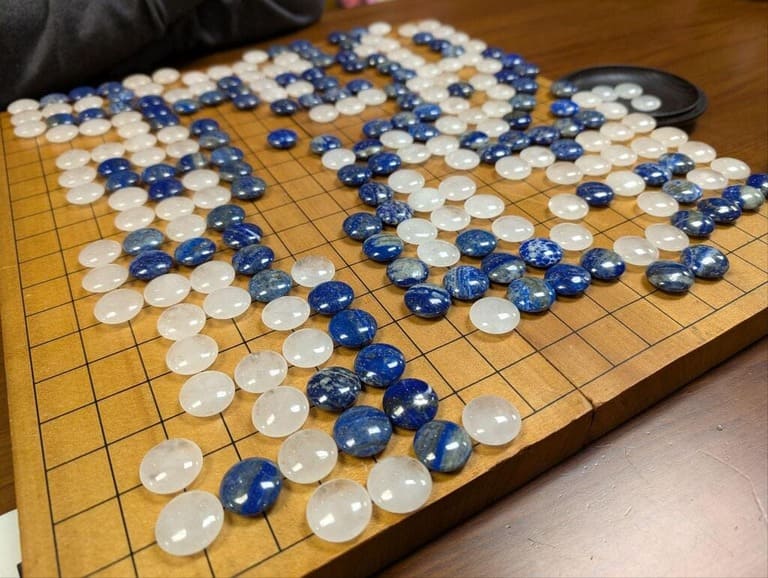

I want to encourage everyone to play more Go in person.
After years of playing the Game of Go, I started a local club. I still played online regularly, but after a while I began to notice that there was a big difference between the two options. Frankly, I felt worse after playing online. I would emerge from a series of online games to find that my body was stiff from sitting still and my monkey brain was racing – furious at my opponent for their unreasonable moves, furious at myself for being unable to refute their overplays.
In contrast, I felt better after playing in person. There is inherent value to building a community and sharing connections with other people. There’s an inherent joy that comes from seeing your friend across the board from you, feeling the pieces in your hands, and hearing the clack of stone against wood. A regular Go meetup may not be possible for everyone based on their geography, but it’s worth trying to start one. To add yourself or a club to our global map of Go players, visit Baduk.Club/map
The Need For Adequate Go Equipment
A normal hobby may require an investment of hundreds of dollars (a nice bicycle) or thousands of dollars (Magic the Gathering), but Go can be played inexpensively. My first Go set was the cheapest equipment that I could find online at the time, and I imagine that many players would say the same. From printable 9x9s and 3D-printed sets to commercial options like Amazon and Ebay, there are many inexpensive starter sets. The cheapest sets may not display the game in the best light, but they are functional.
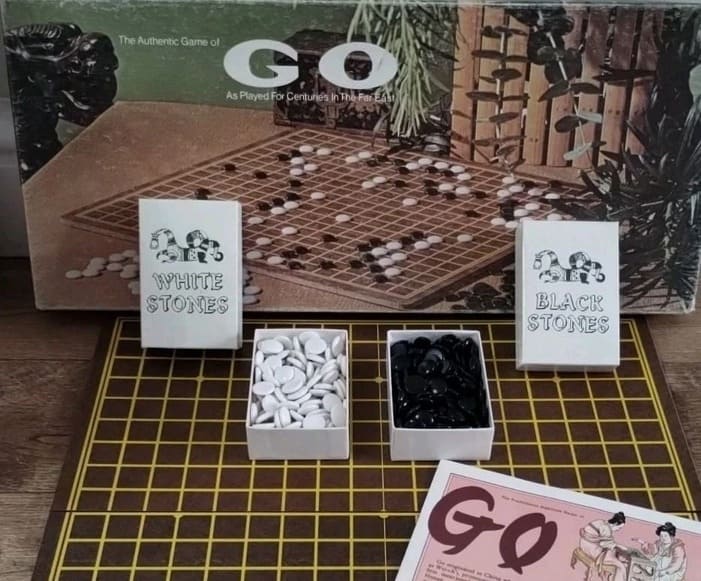
After playing for years, however, I think it is worth investing in a nice set. In my experience, a nice Go set enhances the experience of playing in person. When we meet physically over the board we expose new people to the game. Spectators of a game in progress are captivated by the visual appeal, so having a nice set features the game in the best light and will attract new players.
My first set is long gone now, passed along to a newer player as I received an upgrade from my Go mentor. That upgrade was a gift of second-hand Slate and Shell, and it is what later inspired me to open an online Go store. For the last five years I have been helping to connect players with better Go sets via the BadukClub Store. I still wonder, each time that I put a set in the mail, “What old set will this replace? What new player will receive the hand-me-down?”
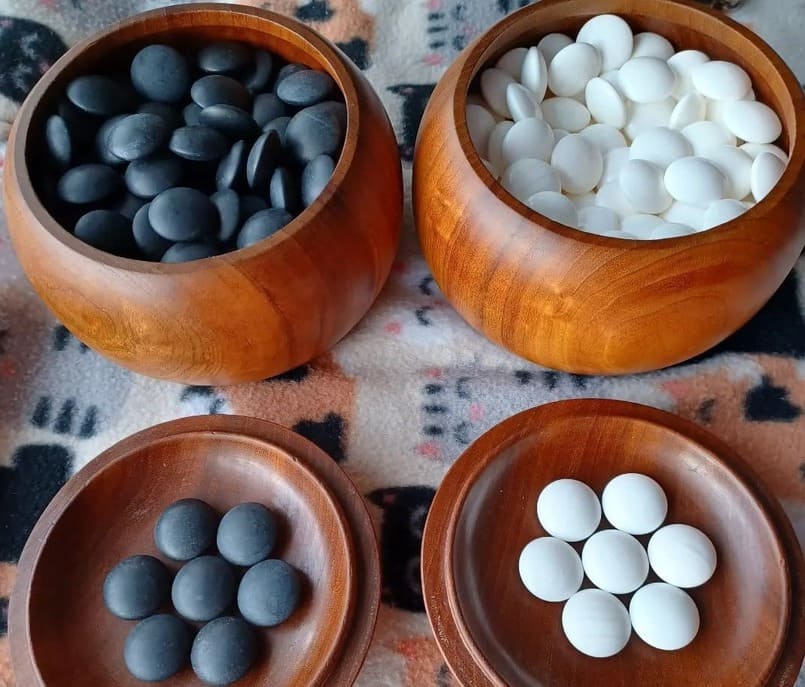
This is Part 1 of a Go Equipment series. I hope that by reading these articles you will be more informed when it comes to finding and purchasing a suitable set for yourself. In Part 1 I will examine the readily available options for Go Stones, considering the benefits and drawbacks of each, with a primary focus on how different stones will activate our senses (feeling, seeing, and hearing). In Part 2 I will review various Go Boards.
My name is Solomon. I began playing go in 2001 and I am currently an AGA 3 dan. In 2020 I started refurbishing vintage Japanese Go equipment, some of which is available for sale at the BadukClub store. You can contact me at [email protected] for equipment suggestions or appraisals.
The Importance of Context
When it comes to obtaining a set, first consider the context in which the set will be used:
- Who is the set for?
- What is the budget?
- How carefully will the set be handled?
In addition to the context, also consider how the equipment will look, feel, and sound. The game is visually interesting, of course, but in addition to your eyes you also experience the game with your hands and your ears.
- How does the equipment look to you?
- How do the materials feel in your hands?
- How do the stones sound on the board?
If you already have a set and are considering an upgrade, think about who you might gift your current set to. A used set connects you with other people, and builds the community at the heart of this game.
Which Go Stones?
There are many types of Go stones available, for free or for purchase, and many players also find joy in crafting their own pieces. I absolutely loved to see John’s journey as he undertook the creation of glow-in-the-dark stones by suspending objects in epoxy. The Game of Go is a playground for creativity, and this is one opportunity of many.

So that your stones can be used on any standard board, they should be standard size. That standard size is circular, about 22mm in diameter. In the photo above, a slate and shell set from Japan has an unusual coin-like shape but still fits the board perfectly. The standard shape for Go stones is a lens shape (convex on both sides), although single-convex stones are popular in China.
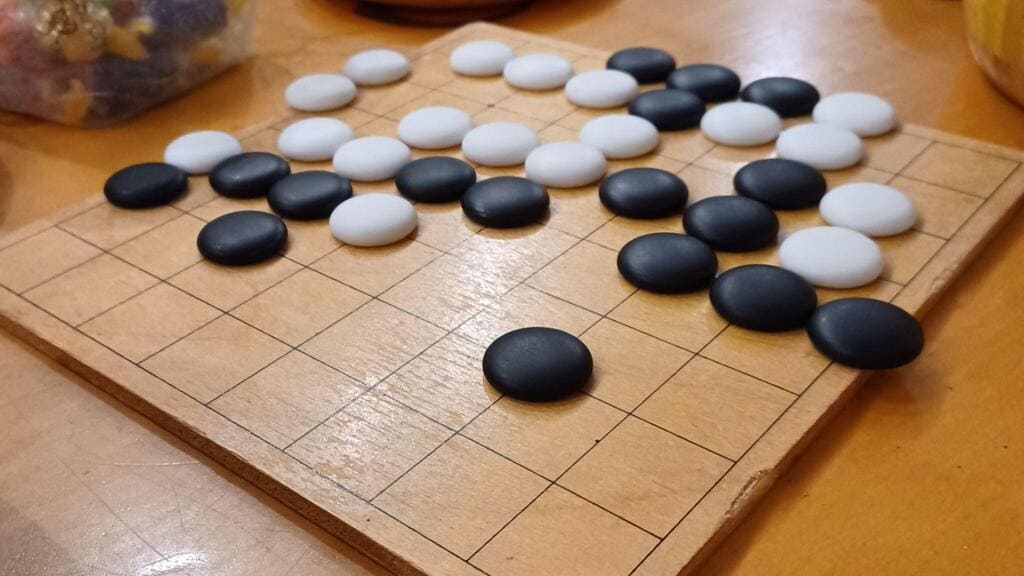
Seen above, single-convex stones don’t wobble. They can also be cleverly inverted to mark ‘what-if’ moves during a review. The main complaint of single-convex stones is how hard it is to remove them from the board at the end of the game.
A Variety of Materials
Some players prefer glass or yunzi, while others prefer slate and shell. From least expensive to most expensive, I’ll review the primary benefits and drawbacks of the most common materials for Go stones.
Plastic ★☆☆☆☆

Plastic pieces are durable and cheap, which is a good option for young children who will inevitably throw them all over the room. Students and teachers in the US can acquire free starter sets from the American Go Foundation for their classroom or library (in addition, matching grants are available up to $200 for equipment and $1000 for Go instructor salaries).
Drawbacks: These pieces are lightweight and flimsy. It’s difficult to keep the stones in place on the board, especially as you graduate to larger board sizes and longer games. As you play the pieces, the sound of plastic clicks is not very satisfying.
Resin ★★☆☆☆

Resin is durable. It is available in single-convex or double-convex shapes, and will last a long time even with heavy use. Being lightweight and unbreakable makes it great as a travel set, especially if you are running a club with multiple sets that need to be transported regularly.
Drawbacks: Resin sounds better on the board than plastic, but not by much. Resin is still just dense plastic – its low density may feel flimsy, and double-convex resin stones don’t always stay in place. The white resin pieces may discolor over time with exposure to regular UV light and the oil of human hands.
Glass ★★★☆☆
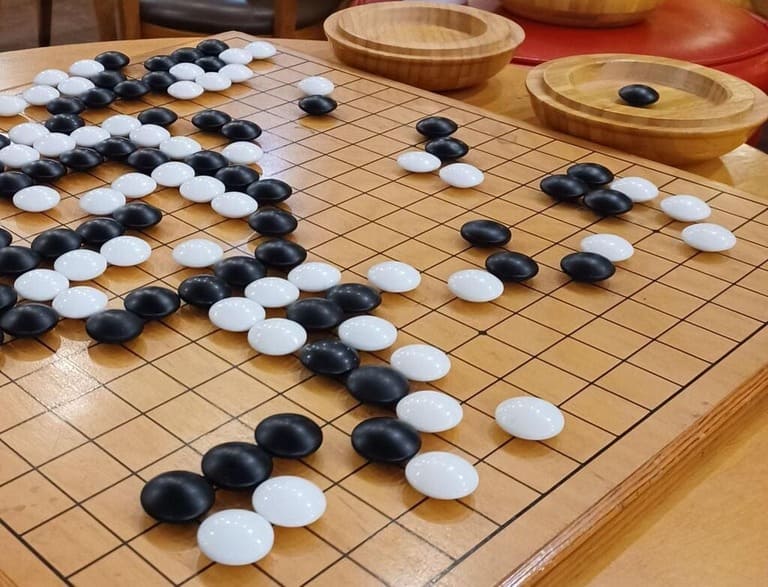
Glass is a standard material for go stones. It is inexpensive and slick, available in glossy or matte finishes. The pieces are dense and hold their position on the board better. It is easy to tell when glass is dirty, and glass is easy to clean.
Drawbacks: Depending on the lighting, glossy glass can be harsh on the eyes. Glass pieces hit the board with a loud clack, which is harsh on the ears. Glass is slippery, and it’s easy to disturb a position by accidentally dropping a piece. Lower quality glass can degrade and is more prone to breakage.
Yunzi ★★★★☆

Yunzi is a ceramic material like glass, so it sounds about the same as glass when played on the board. However, the matte texture of yunzi does not cause glare. Unlike glass, it is slightly porous so it feels rough and is easier to grip. Yunzi stones have been sold out for many years, but are now available again in single-convex or double-convex shape. Many people have opinions about Yunzi, but the overall sentiment is very positive.
Drawbacks: Yunzi requires some maintenance, beginning with a thorough cleaning before the first use. They should be oiled, and then buffed clean of any excess oil – I recommend mineral oil, but some players instead let them slowly acquire the natural oils of human hands. Vintage versions of yunzi were rumored to contain lead, making old sets a potential hazard for young children (and anyone else that regularly puts glass in their mouth).
Slate & Shell ★★★★★

Slate & Shell is an upscale option from Japan. Cores are drilled from Mexican clamshells and Japanese slate blocks – the cores are then ground into biconvex shape. These natural materials are slightly porous, so they feel smooth in your hands while also being easily gripped in the fingers. The sound of the pieces hitting the board is noticeably softer than glass. Small differences in the growth lines of different clamshells give each piece a unique look, although it may require a backlight to fully appreciate their composition.

Drawbacks: these stones can be expensive, especially as one seeks out thicker sets and finer clamshell selections. For the best protection, the stones should be maintained by oiling the slate and waxing the clamshell. Transporting them brings a risk of damage, so they don’t make good travel sets. Chipped stones are hard to replace, as substitutes will look unusual if they don’t match the thickness, color, and grade.
Exotic Stones ★★★★★
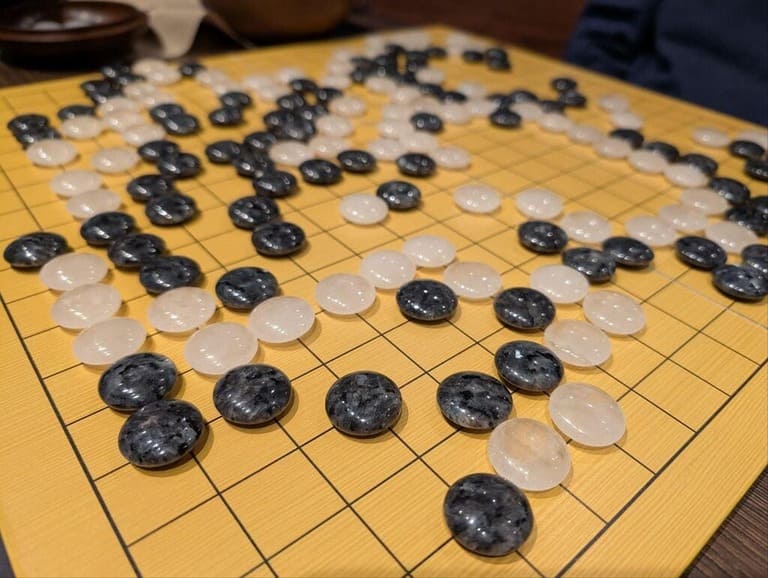
Colored minerals can bring new energy and life to a Go set. The photo above shows Labradorite & Quartz, which keep to the general theme of light and dark stones. Agate and Onyx also keep this light and dark theme, are relatively inexpensive, and their shiny-ness provides visual interest.
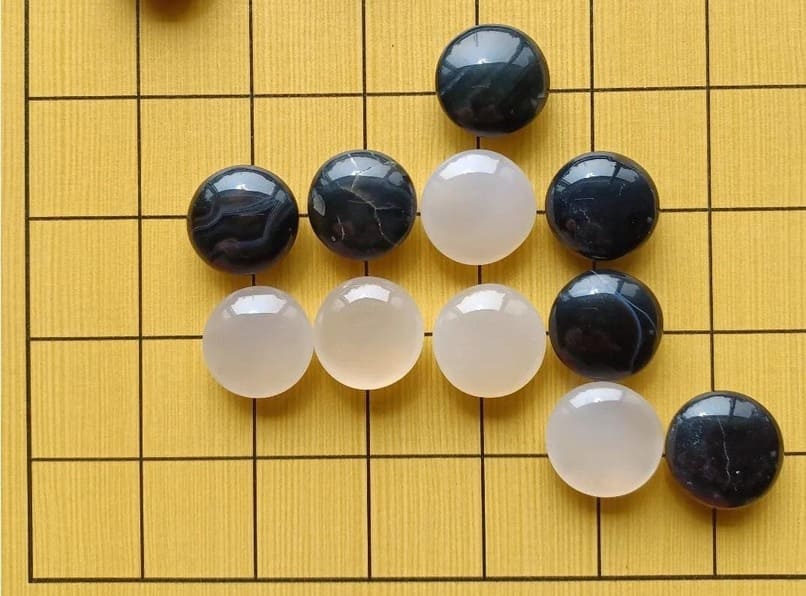
Other popular materials like Amethyst or Lapis Lazuli will replace the black stones with a radiant blue or purple.
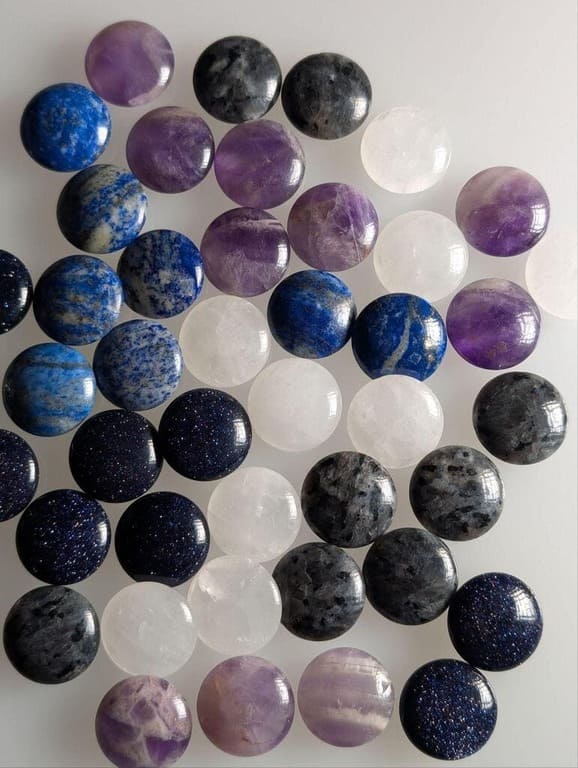
Other man-made materials like Goldstone create a sparkly look by combining glass with additions of Copper, Cobalt, or other minerals. Manmade options will sound like glass, of course, while mineral options will sound more like slate. The BadukClub Store has a variety of options in stock, and we can custom order other materials upon request.
Drawbacks: A full set of semi-precious stones is expensive due to the long time it takes to produce each lens shape (for a gemstone this double-convex shape is called a Cabochon). If there is not sufficient contrast between colors, then new players may find it difficult to see the borders of their groups and AI scoring apps will struggle to read the board positions.
And More…
Anything can be repurposed as a go stone, from pebbles to coins to bottle caps. Focus on what looks good, feels good, and sounds good to you. Once you’ve got a set ready, put yourself on the Map.
Further Reading:
When I first took an interest in vintage Japanese Go equipment, I found it very useful to read John Fairbairn’s “In Pursuit of Elegance: A Survey of the Best in Go Equipment.” That article is Chapter 9 in The Go Player’s Almanac by Richard Bozulich.For more about Vintage Go Equipment, check out this About page. For maintenance of Vintage Go equipment, please refer to my Care Instructions.
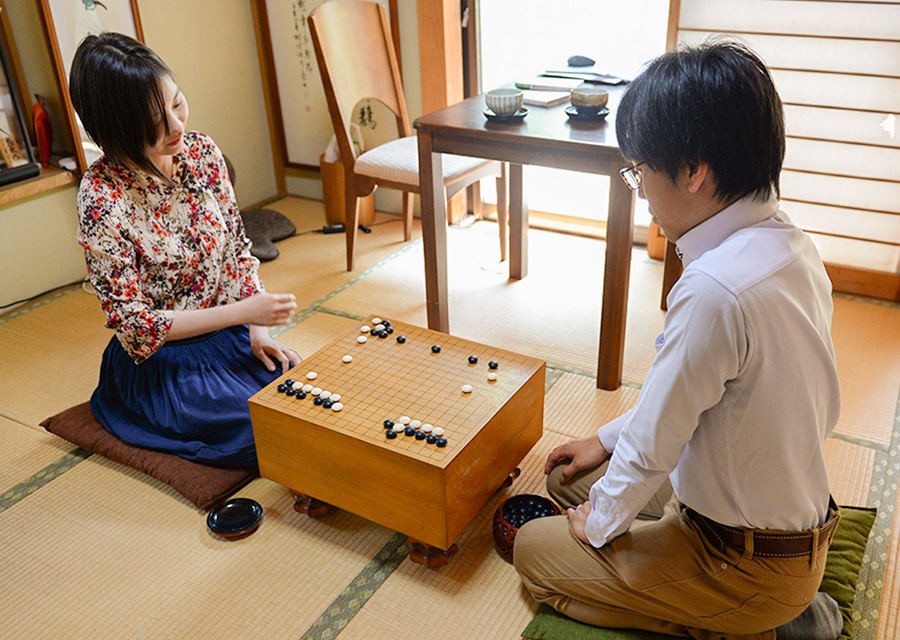
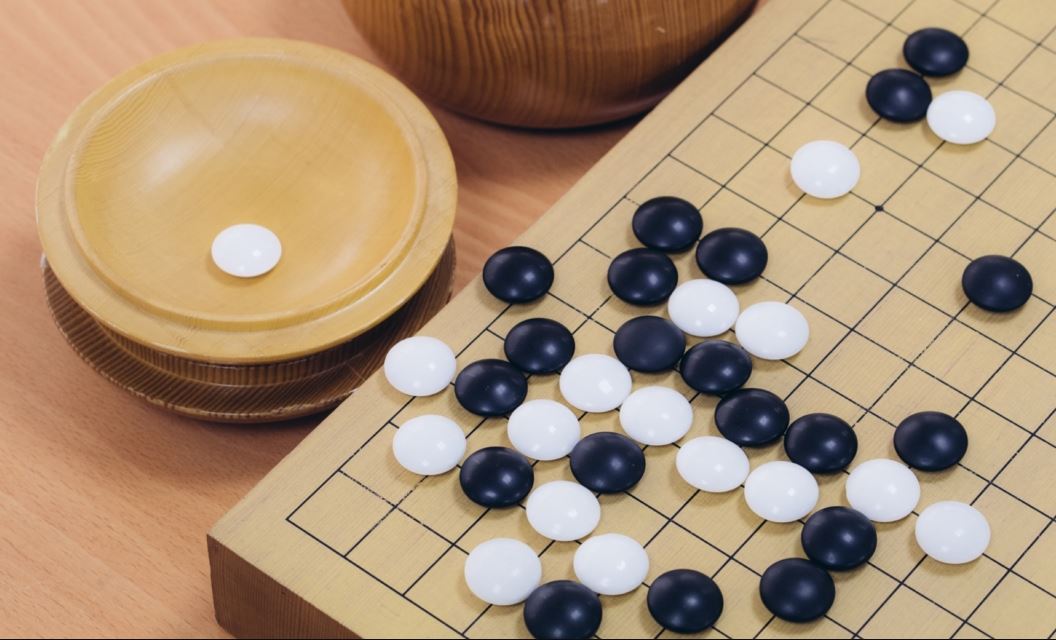
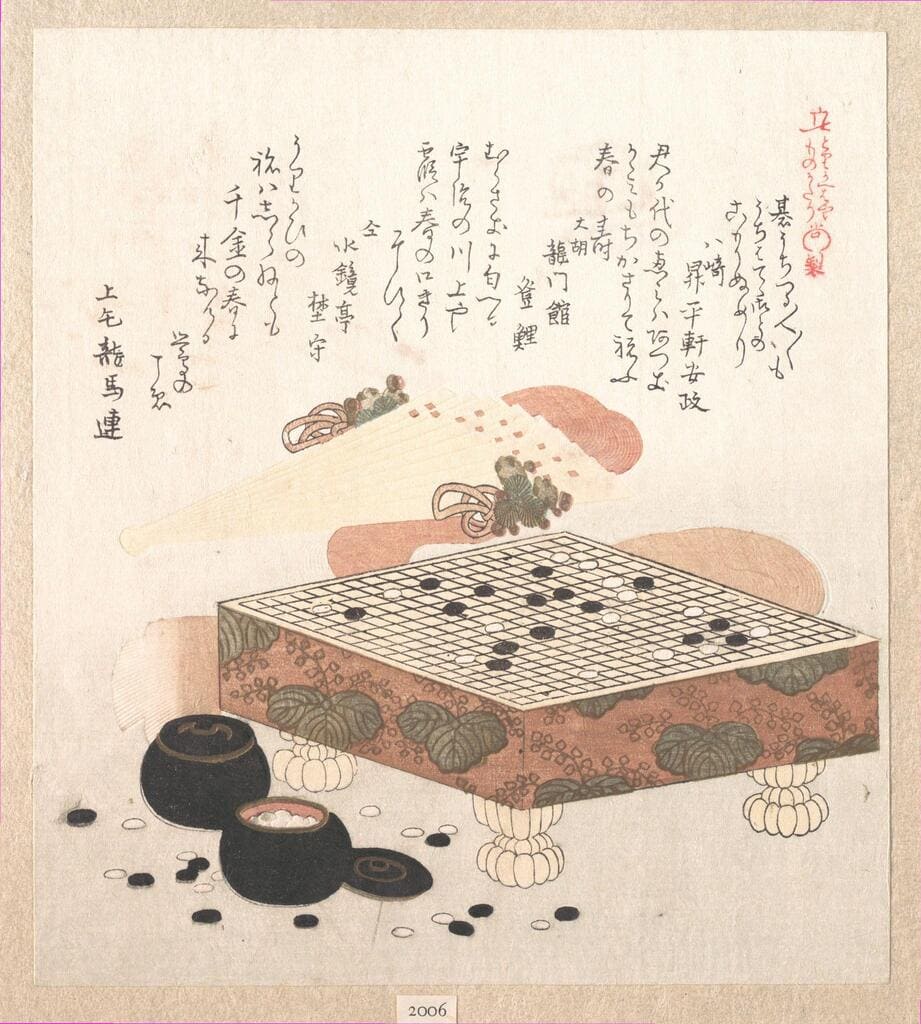
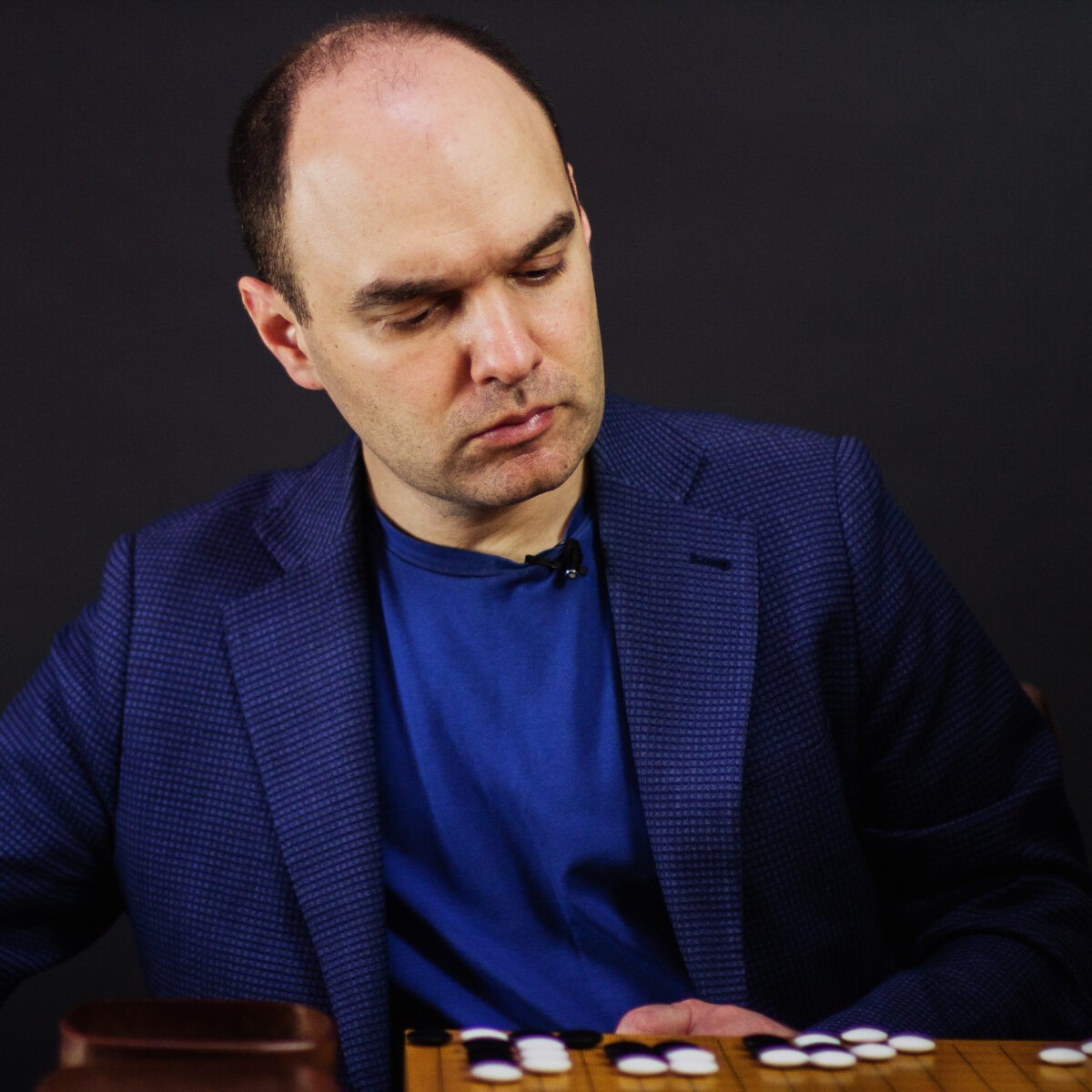
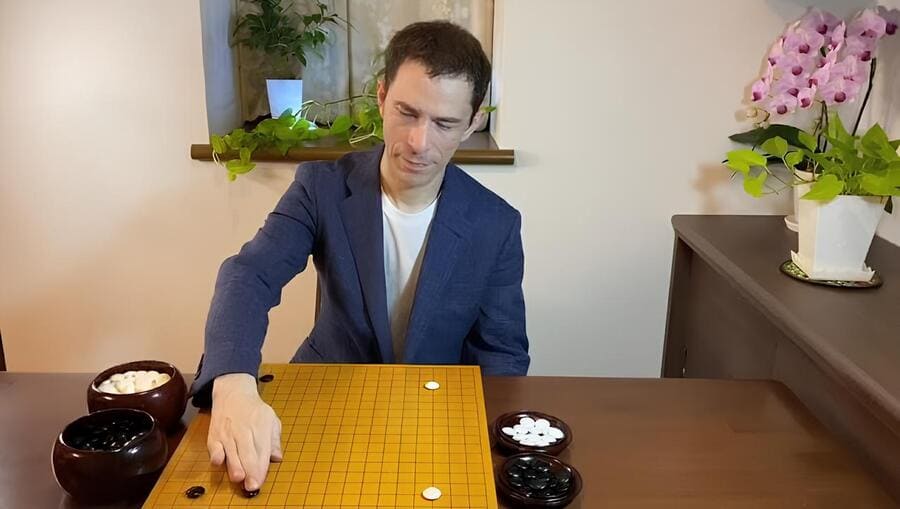
Does anyone know which brand and type of stones Vadim uses in his videos? I like the texture and size of them and would love to pick up a set.